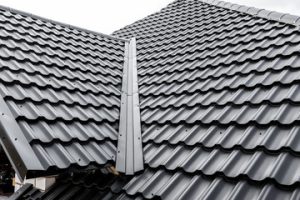A roof is more than a shelter; it’s the first defense of every building. Roofing combines engineering, artistry, and practical foresight. It shapes the perception of a structure while protecting its inhabitants. The modern approach to roofing balances durability, aesthetics, and environmental awareness.

New materials have redefined how roofs perform over time. Innovations in lightweight composites and reflective coatings extend lifespan while reducing heat absorption. These materials also decrease structural stress, allowing for larger designs. Roofing now embraces both function and sustainability in every layer.
Professional roofing goes beyond installation. It involves careful planning, inspection, and precision execution. Every slope, angle, and seam must align with design and weather considerations. Attention to detail determines longevity and the ability to withstand extreme conditions.
Climate responsiveness is now central to roofing solutions. Modern roofs account for temperature swings, rainfall intensity, and wind pressure. Adaptive designs prevent leaks, ice accumulation, and structural fatigue. Each roof becomes a climate-resilient shield engineered for changing conditions.
Roofing professionals increasingly focus on energy efficiency. Insulation, ventilation, and reflective surfaces lower cooling and heating costs. The roof is no longer a passive cover but an active contributor to building performance. This integration of energy-conscious design is transforming traditional construction.
Another trend is aesthetic roofing, where materials and patterns complement architectural style. Roofing now contributes to curb appeal as much as protection. The choice of texture, color, and geometry can elevate property value instantly. Design-conscious roofs merge beauty with structural integrity.
Maintenance is an evolving component of roofing services. Regular inspections catch minor issues before they become costly repairs. Preventive care enhances lifespan and maintains visual appeal. A roof is a long-term investment that requires consistent attention to protect its value.
Sustainable roofing practices are gaining momentum. Rainwater collection, solar integration, and recyclable materials are part of modern designs. The roof becomes an ecological asset rather than a resource drain. Sustainability in roofing is no longer optional; it’s a responsibility.
Roofing technology has improved worker safety significantly. Harness systems, aerial lifts, and ergonomic tools reduce accidents. Professionals can complete more complex jobs efficiently without compromising safety. Technology ensures that precision work and protection go hand in hand.
Modern roofing emphasizes adaptability in design. Flat roofs now support gardens, patios, or solar arrays, transforming unused spaces. Sloped roofs incorporate ventilation and drainage innovations that prevent decay. Each adaptation enhances both function and livability.
Waterproofing techniques are more advanced than ever. Multi-layer membranes, sealants, and underlays prevent leaks and moisture damage. Proper drainage systems channel water efficiently, avoiding structural compromise. Effective waterproofing protects the building while preserving aesthetic value.
Roof longevity depends on material choice, installation quality, and environmental conditions. Metals, tiles, and synthetic options each offer unique benefits. Professionals match material properties to specific building needs and climate challenges. Longevity is achieved through strategy, not chance.
Green roofing introduces new design possibilities. Vegetation on rooftops reduces heat, filters air, and enhances stormwater management. Green roofs blend environmental benefits with aesthetic appeal. They symbolize a shift from conventional roofing to multifunctional architecture.
Technological monitoring now supports predictive roofing maintenance. Sensors detect temperature, moisture, and movement to anticipate issues. Proactive intervention reduces costs and prevents structural damage. Roofing becomes smarter and more responsive with integrated monitoring.
Noise reduction is a subtle yet important factor in roofing. Materials and insulation can block external sounds, improving interior comfort. Modern roofs are not only protective but also acoustic buffers. This adds an unexpected layer of functionality to the design.
Energy integration is transforming roofing into a power source. Photovoltaic panels and solar shingles blend with traditional materials seamlessly. Roofs now generate electricity while maintaining visual harmony. Energy-producing roofs redefine their role from passive protection to active utility.
Aesthetic coatings protect surfaces while enhancing color longevity. UV-resistant paints and reflective finishes prevent fading and material degradation. Coatings ensure that the roof remains visually appealing for decades. Protective beauty combines function with style effortlessly.
Roof design increasingly considers environmental impact. Recycled materials and low-emission processes reduce ecological footprints. Every project can now be assessed for sustainability, from material sourcing to final installation. Environmental consciousness defines modern roofing practice.
Installation methods have evolved with precision tools. Laser-guided alignment, automated cutting, and modular systems reduce errors. Faster installation does not compromise quality, as planning precedes execution. Precision engineering ensures that the roof performs flawlessly.
Roofing now incorporates fire resistance and hazard mitigation. Materials are tested for flame retardancy, wind uplift, and impact resilience. Safety codes guide design to protect both inhabitants and property. Modern roofing is a shield for life, not just a cover.
Emergency repairs are streamlined through professional services. Rapid response systems address leaks, storm damage, and material failure efficiently. Minimizing downtime prevents secondary damage and property loss. Roofing expertise now combines routine care with urgent interventions.
Cultural and historical architecture influences contemporary roofing choices. Traditional aesthetics are integrated with modern durability. Heritage styles are preserved while adapting to current performance standards. Roofing balances respect for the past with innovation for the future.
The psychological impact of a well-designed roof is notable. It conveys security, pride, and permanence to occupants. Visual dominance and symmetry influence perception of the entire structure. Roofing contributes to the identity of a building beyond its practical role.
Material innovation includes hybrid composites that blend strength, flexibility, and lightweight properties. These materials support unusual architectural forms previously impossible. Architects can push design boundaries without compromising structural safety. Modern roofing expands creative potential.
Roofing professionals now integrate environmental simulation into planning. Software models predict wind loads, solar exposure, and rainwater flow. Simulation ensures that installation withstands both daily use and extreme events. Virtual testing reduces surprises after construction.
Maintenance also incorporates smart cleaning and protective treatments. Coatings resist moss, algae, and dirt accumulation. Easy-to-clean surfaces reduce labor and preserve aesthetics. Ongoing care ensures the roof remains efficient and beautiful.
Another emerging focus is modular roofing for fast deployment. Prefabricated panels simplify construction, reduce waste, and enhance precision. Modular systems make complex roofs achievable in shorter timeframes. The approach emphasizes efficiency without sacrificing quality.
Ventilation and airflow management are critical for long-term performance. Proper ventilation prevents moisture, heat buildup, and material fatigue. Optimized airflow enhances energy efficiency and indoor comfort. These invisible systems are as crucial as the roof surface itself.
Innovation in sealing technology prevents water ingress without compromising aesthetics. Modern sealants bond securely while remaining flexible under temperature changes. These systems adapt to natural expansion and contraction of materials. Effective sealing is invisible yet essential.
Roofing also addresses snow and ice management in cold climates. Specialized coatings and heat channels reduce accumulation risks. Structural integrity is maintained even under extreme seasonal loads. Proactive design mitigates potential damage before it occurs.
The rise of multi-functional roofs combines safety, utility, and lifestyle. Rooftop terraces, gardens, and solar solutions coexist with traditional protection. Roofs now serve as living spaces, energy sources, and aesthetic features simultaneously. The evolution of roofing extends beyond shelter into environmental and personal enhancement.
Roof inspection technology integrates drones for high-accuracy visual assessment. High-resolution imaging and thermal scans detect hidden weaknesses. Inspections are faster, safer, and more precise than traditional methods. Drone-assisted evaluations revolutionize preventive maintenance.
Modern roofing design considers global weather variability. Materials and construction methods are chosen for adaptability across unpredictable climates. Each roof is engineered for resilience, not just appearance. Adaptation ensures that structures endure while remaining visually compelling.
Roofing education now emphasizes both science and artistry. Professionals learn material properties, structural dynamics, and aesthetic principles. They combine technical knowledge with creative intuition. Modern roofing expertise is holistic, blending engineering, artistry, and environmental consciousness.
The essence of roofing lies in protection, longevity, and experience. It shields inhabitants, preserves value, and shapes perception. Each project integrates practical engineering with subtle aesthetic choices. Roofing today is a testament to human ingenuity and thoughtful design.
In conclusion, modern roofing transcends its traditional role as a simple cover. It integrates safety, efficiency, aesthetics, and sustainability into every surface. Innovation, precision, and expertise define its evolution. A roof is not merely built; it is engineered, curated, and experienced over time.



